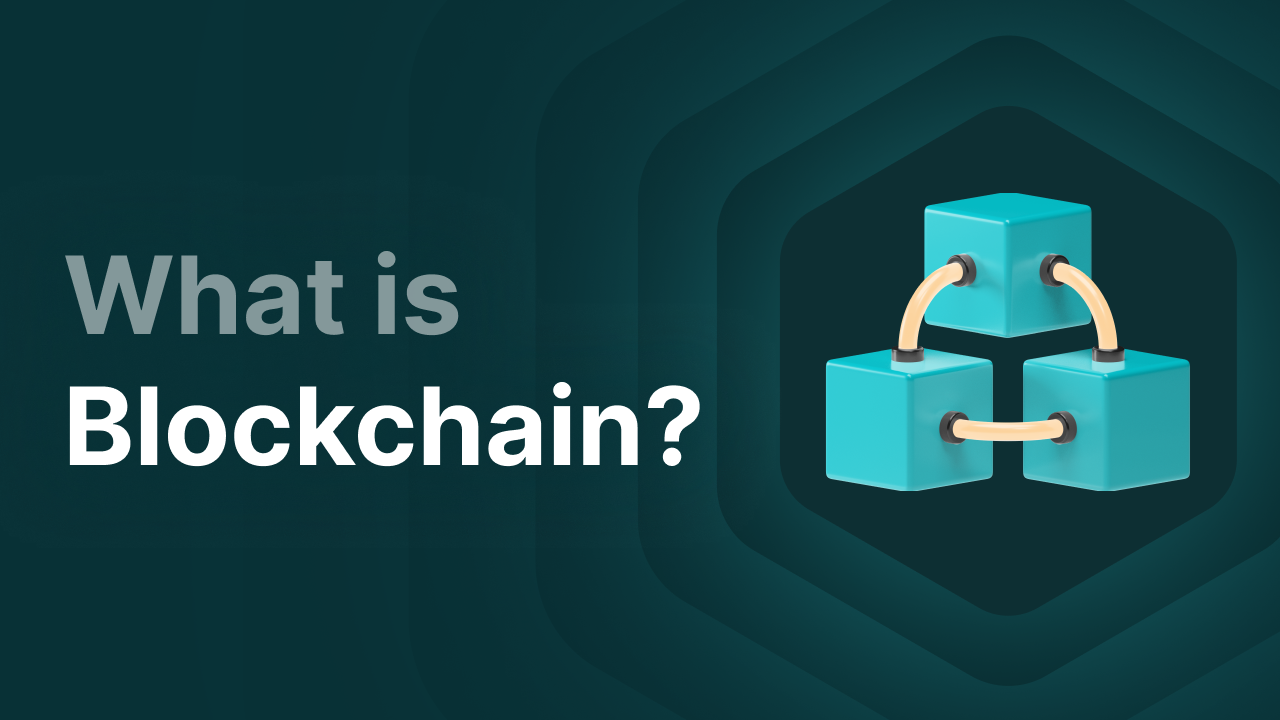What is Blockchain?

In recent years, the term "blockchain" has become ubiquitous, permeating conversations across various industries. From finance to healthcare, supply chain management to real estate, blockchain technology is touted as a revolutionary development poised to transform multiple sectors. But what exactly is blockchain? How does it work, and why is it considered so transformative? In this comprehensive guide, we'll delve into the intricacies of blockchain, exploring its history, underlying technology, applications, and potential future impacts.
Key Takeaways
- A blockchain is a decentralized, digital ledger used to record transactions across many computers in such a way that the registered transactions cannot be altered retroactively.
- The concept of blockchain technology was first introduced in 2008 by an individual or group of individuals known by the pseudonym Satoshi Nakamoto.
- Many countries are exploring the development of central bank digital currencies (CBDCs), which utilize blockchain technology to create digital versions of their national currencies.
Understanding Blockchain Technology
What is Blockchain?
At its core, a blockchain is a decentralized, digital ledger used to record transactions across many computers in such a way that the registered transactions cannot be altered retroactively. This ensures the security and transparency of data, fostering trust among participants. Essentially, blockchain technology allows for the secure transfer of data and assets without the need for intermediaries.
Key Components of Blockchain
Blocks: Each block in a blockchain contains a list of transactions. Once a block is completed, it is added to the chain in a linear, chronological order.
Nodes: Nodes are computers that participate in the blockchain network. They validate and relay transactions, ensuring the network's integrity.
Miners: In certain blockchain models, miners are specialized nodes that solve complex mathematical problems to validate transactions and add them to the blockchain, a process known as mining.
Hash Function: Each block includes a cryptographic hash of the previous block, a timestamp, and transaction data. The hash function ensures that any change in the block’s data will produce a different hash, thus maintaining the integrity of the blockchain.
How Does Blockchain Work?
The process of how blockchain technology operates can be simplified into a few essential steps:
- Transaction Initiation: A user requests a transaction, which can involve cryptocurrency, contracts, records, or other information.
- Transaction Verification: The requested transaction is broadcast to a P2P network consisting of nodes.
- Validation: The network of nodes validates the transaction and the user’s status using known algorithms.
- New Block Creation: Once verified, the transaction is combined with other transactions to create a new block of data.
- Blockchain Update: The new block is added to the existing blockchain, making it permanent and unalterable.
- Completion: The transaction is complete, and the record is transparent and immutable.
Types of Blockchain
Public Blockchains: These are open to anyone and fully decentralized. Bitcoin and Ethereum are prime examples of public blockchains where anyone can participate in the consensus process.
Private Blockchains: Access to these blockchains is restricted and typically controlled by a single organization. They are used in enterprise settings where data privacy is crucial.
Consortium Blockchains: These are semi-decentralized, with control resting with a group of organizations rather than a single entity. This model is often used in the banking and finance sectors for collaborative efforts.
Hybrid Blockchains: Combining features of both public and private blockchains, hybrid blockchains offer a balance of transparency and control.
History and Evolution of Blockchain Technology
The concept of blockchain technology was first introduced in 2008 by an individual or group of individuals known by the pseudonym Satoshi Nakamoto. It was implemented the following year as the underlying technology for Bitcoin, the first cryptocurrency. Nakamoto’s innovation solved the double-spending problem inherent in digital currencies by ensuring that transactions could not be duplicated or tampered with.
Bitcoin's success demonstrated the potential of blockchain technology beyond digital currencies, sparking interest in various sectors. The development of Ethereum in 2015 further expanded blockchain’s capabilities by introducing smart contracts, which are self-executing contracts with the terms of the agreement directly written into code.
Applications of Blockchain Technology
Cryptocurrency
Cryptocurrency remains the most well-known application of blockchain technology. Bitcoin, Ethereum, and thousands of other cryptocurrencies rely on blockchain to record transactions securely and transparently.
Supply Chain Management
Blockchain technology enhances supply chain transparency and traceability. By recording every transaction on an immutable ledger, companies can track the journey of goods from origin to consumer, reducing fraud and improving efficiency.
Healthcare
In healthcare, blockchain can secure patient data, making it accessible only to authorized parties and reducing the risk of data breaches. It can also streamline the management of medical records and support the sharing of information across institutions securely.
Finance
Beyond cryptocurrencies, blockchain technology is revolutionizing traditional finance by enabling faster and cheaper cross-border payments, improving the transparency of transactions, and facilitating the development of decentralized finance (DeFi) platforms.
Real Estate
Blockchain can simplify real estate transactions by providing a clear and immutable record of ownership, reducing the risk of fraud, and streamlining the transfer process. Smart contracts can automate various aspects of real estate transactions, from property listings to final sale agreements.
Voting Systems
Blockchain-based voting systems can enhance the integrity and transparency of elections. By ensuring that each vote is recorded accurately and immutably, blockchain technology can help prevent election fraud and increase voter confidence.
Intellectual Property
Blockchain can protect intellectual property by providing a permanent record of creation and ownership. This can be particularly useful for artists, writers, and inventors who need to prove ownership and prevent unauthorized use of their work.
Benefits of Blockchain Technology
Transparency: Blockchain’s decentralized nature ensures that all participants have access to the same data, enhancing transparency and trust.
Security: The cryptographic principles underlying blockchain make it highly secure. Once recorded, data cannot be altered without the consensus of the network.
Efficiency: By removing intermediaries and automating processes through smart contracts, blockchain can significantly reduce transaction times and costs.
Traceability: Blockchain provides a complete and immutable history of transactions, making it easier to trace the origin and movement of assets.
Decentralization: Blockchain operates on a decentralized network of nodes, reducing the risk of a single point of failure and enhancing the robustness of the system.
Challenges and Limitations
While blockchain technology offers numerous advantages, it also faces several challenges:
Scalability: Public blockchains, in particular, can struggle with scalability issues, leading to slower transaction times and higher costs as the network grows.
Energy Consumption: The process of mining, especially in proof-of-work blockchains like Bitcoin, consumes significant amounts of energy, raising environmental concerns.
Regulatory Uncertainty: The regulatory landscape for blockchain and cryptocurrencies is still evolving, with different countries adopting varying approaches. This uncertainty can hinder the adoption and development of blockchain projects.
Complexity: The technical complexity of blockchain technology can be a barrier to understanding and adoption, particularly for non-technical stakeholders.
Interoperability: Different blockchain platforms often lack interoperability, making it challenging for systems to communicate and share data seamlessly.
The Future of Blockchain Technology
The future of blockchain technology holds immense potential, with continuous advancements and innovative applications emerging across various sectors. Here are some trends and developments to watch:
Integration with Emerging Technologies
Blockchain is likely to be increasingly integrated with other emerging technologies such as artificial intelligence (AI), the Internet of Things (IoT), and big data. This integration can enhance the capabilities of these technologies, enabling new and innovative applications.
Development of Central Bank Digital Currencies (CBDCs)
Many countries are exploring the development of central bank digital currencies (CBDCs), which utilize blockchain technology to create digital versions of their national currencies. CBDCs can offer the benefits of digital currencies while maintaining regulatory oversight and stability.
Enhanced Privacy and Security Features
Future blockchain developments are expected to focus on enhancing privacy and security features, addressing concerns related to data protection and anonymity. Techniques such as zero-knowledge proofs and secure multi-party computation are being explored to achieve this.
Expansion of Decentralized Finance (DeFi)
Decentralized finance (DeFi) platforms, which leverage blockchain technology to provide financial services without intermediaries, are set to grow significantly. DeFi can democratize access to financial services, offering innovative products such as decentralized lending, borrowing, and trading.
Mainstream Adoption
As blockchain technology matures and overcomes existing challenges, we can expect more mainstream adoption across various industries. This will be driven by increased awareness, improved scalability, and regulatory clarity.
Conclusion
Blockchain technology represents a transformative innovation with the potential to revolutionize various sectors by enhancing transparency, security, and efficiency. From its origins as the backbone of Bitcoin to its expanding applications in supply chain management, healthcare, finance, and beyond, blockchain continues to evolve and offer new possibilities. Understanding what blockchain is and how it works is essential for anyone looking to navigate the future of digital technology and its impact on our world.
As we look ahead, the continued development and integration of blockchain technology promise to bring about significant changes, driving innovation and shaping the digital landscape of tomorrow. Whether you're an individual, a business, or a policymaker, staying informed about blockchain technology and its potential applications will be crucial in leveraging its benefits and addressing its challenges.
